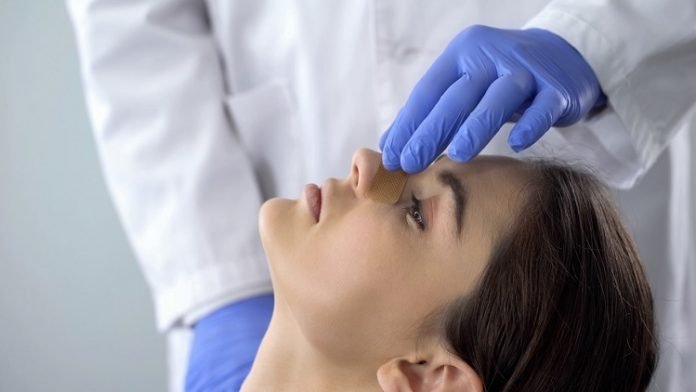Last Updated on March 12, 2024 by admin
While scrolling past yet another rhinoplasty before and after miracle, you decide it’s time: you’re getting a nose job.
Do you know the potential side effects after the procedure?
Read on to learn the most common rhinoplasty side effects and ways you can help your body recover and heal post-surgery.
Table of Contents
What Is Rhinoplasty?
Rhinoplasty is a type of surgery that changes the shape of your nose. It can be to help you breathe or to change your nose’s appearance.
A rhinoplasty surgeon may alter your bone, cartilage, skin, or all three, depending on your face structure and your desired outcome.
All About Recovery: Common Rhinoplasty Side Effects
Rhinoplasty recovery is a steady process; most patients feel like themselves again after one week. You’ll be able to return to your normal activities after two to four weeks of healing from your rhinoplasty with Dr. Marcelo Antunes.
The most common side effects include:
Pain
Rhinoplasty patients typically report discomfort on a scale of 0 to 4 out of 10 the day after surgery. Your surgeon will prescribe pain medication for the first week or two post-surgery. Switch to over-the-counter pain medication afterward if discomfort persists.
Swelling
The swelling after rhinoplasty is significant and can take months to completely disappear, but the majority should settle after two weeks.
Some doctors recommend using ice packs to help reduce and manage the swelling.
Bruising
Although less common than discomfort and swelling, bruising may take place around the eyes. Most bruises fade within 7-10 days. Older patients may have longer healing times.
Bleeding
Nasal bleeding may take place as your blood vessels begin to heal after surgery. This shouldn’t be more than a trickle or ooze. If you have significant bleeding, it points to a complication of rhinoplasty.
If bleeding persists, it’s important to contact your surgeon. They will either help you pack your nose until the bleeding stops, or (worst-case scenario) take you back to the operating table to fix the issue.
Numbness and Tingling
Numbness or tingling is caused by damaged nerves around the upper lip attempting to heal.
The numbness can last for several weeks or even months post-surgery. In rare cases, the nerve damage is permanent.
Infection
Although a rarer side effect, there is always a chance of infection after any surgery. Look out for signs of infection and contact your doctor if you have any concerns.
To avoid infection after a rhinoplasty, be diligent with your hygiene and follow the care instructions given to you by your surgeon. If you’re prescribed antibiotics, finish the course even if you feel better halfway through.
Breathe Easy and Enjoy Your Reflection
Knowing the most common rhinoplasty side effects lets you prepare mentally for the weeks and months of healing post-surgery. Whether you want a nose job for cosmetic or functional reasons – a rhinoplasty is a life-changing procedure.
Was this post helpful? Check out our blog for more on beauty and read all about fashion, travel, and real estate while you’re there!






















